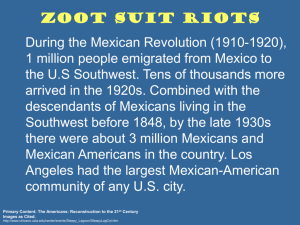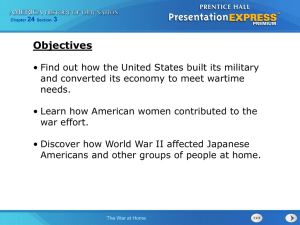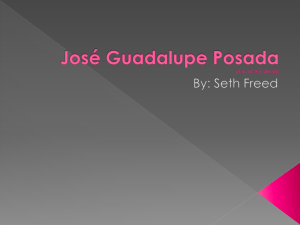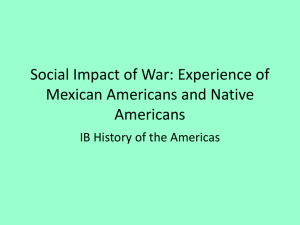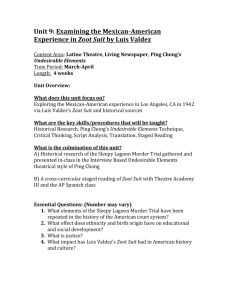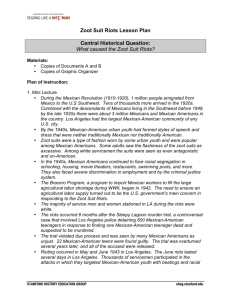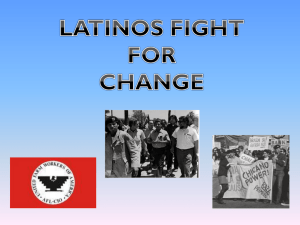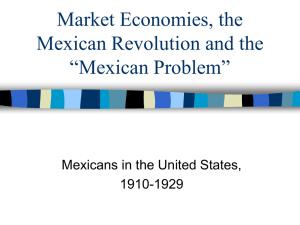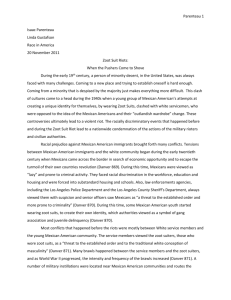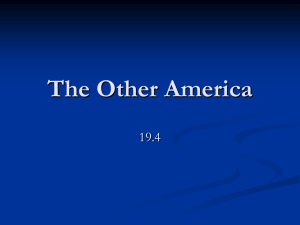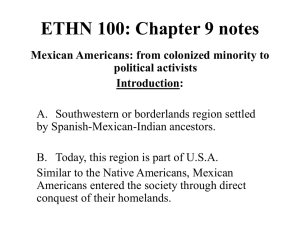Resistance and Repression: The Sleepy Lagoon Case and the Zoot
advertisement
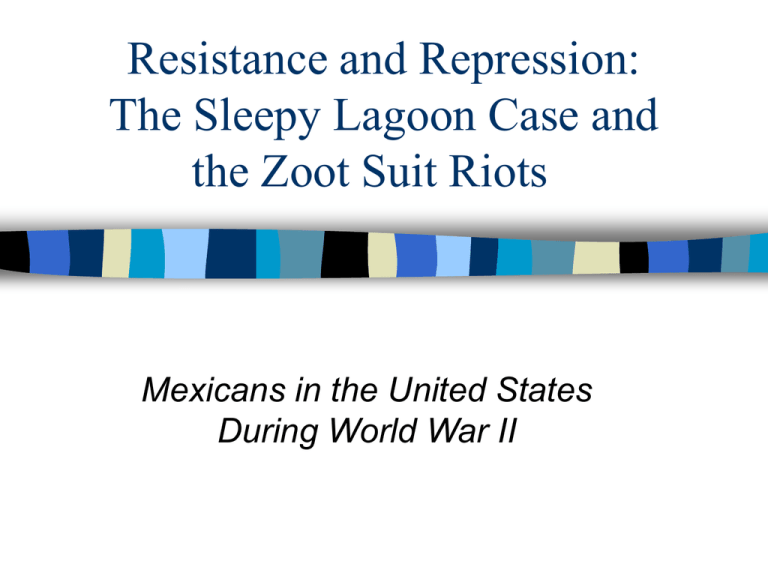
Resistance and Repression: The Sleepy Lagoon Case and the Zoot Suit Riots Mexicans in the United States During World War II Major Themes Mexican men and women participated actively in the war effort. For many the war exposed them to new experiences that broadened their horizons. Young Mexicans adopted American youth culture and made it their own as Pachucos and Pachucas. Pachuco culture was targeted as undesirable and unpatriotic by many white Americans, but others defended Mexican youth. Attitudes toward Pachuco culture reflect the struggle in American society over how Mexican youth would be incorporated into the nation. The U.S. government, state and local initiatives as well as employers, especially in agriculture, actively recruited people from Mexico to come to the U.S. and alleviate wartime labor shortages. Key Questions Were Mexicans segregated in the military during WWII? What effects did their experiences in the military have on Mexicans? How did Mexican women contribute to the war effort? How did the war change the lives of Mexican women? Who were Pachucos and Pachucas? What group was targeted during the investigation of the Sleepy Lagoon case? What group was targeted during the Zoot Suit Riots? Why were the Sleepy Lagoon defendants released? What was the “Bracero Program”? What was its relationship to WWII? War Experiences Mexican Women in the War & on the Home Front Americanization and La Pachucada The Sleepy Lagoon Case Zoot Suit Riots The Sleepy Lagoon Defense Committee & Appeal The Bracero Program: War Time Labor Emergency Further Reading Alvarez, Luis. The Power of the Zoot: Youth Culture and Resistance During World War II. Berkeley: University of California Press, 2008. Endore, S. Guy, and Sleepy Lagoon Defense Committee. The Sleepy Lagoon Case. Los Angeles: The Committee, 1943. Gamboa, Erasmo. Mexican Labor and World War II: Braceros in the Pacific Northwest, 1942-1947. Austin: University of Texas Press, 1990. Gonzalez, Gilbert G. Guest Workers or Colonized Labor?: Mexican Labor Migration to the United States. Boulder: Paradigm Publishers, 2006. Gutiérrez, David. Walls and Mirrors: Mexican Americans, Mexican Immigrants,and the Politics of Ethnicity. Berkeley: University of California Press, 1995. Leonard, Kevin Allen. The Battle for Los Angeles: Racial Ideology and World War II. Albuquerque: University of New Mexico Press, 2006. Mazón, Mauricio. The Zoot-Suit Riots: The Psychology of Symbolic Annihilation. Austin: University of Texas Press, 1984. .Pagán, Eduardo Obregón. Murder at the Sleepy Lagoon: Zoot Suits, Race, and Riot in Wartime L.A. Chapel Hill: University of North Carolina Press, 2003. Ramírez, Catherine Sue. The Woman in the Zoot Suit: Gender, Nationalism, and The Cultural Politics of Memory. Durham: Duke University Press, 2009. Rivas-Rodriguez, Maggie, ed. Mexican Americans & World War II. Austin: University of Texas Press, 2005 -------Beyond the Latino World War II Hero: The Social and Political Legacy of a Generation. Austin: University of Texas Press, 2009.
